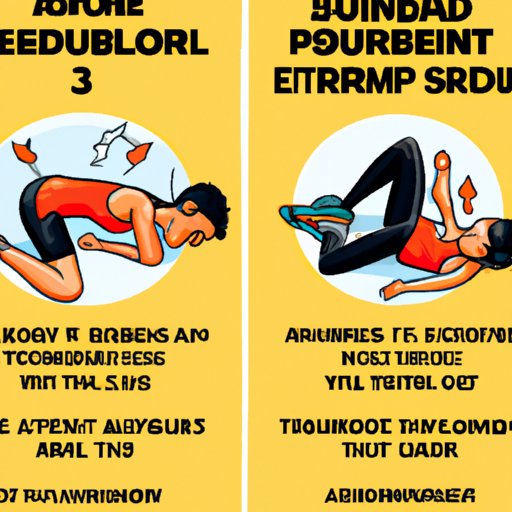Introduction
Post-exercise muscle soreness (PEMS) is a common experience after an intense workout. This soreness is usually felt 24-48 hours after exercise and can last for several days. While muscle soreness can be uncomfortable, it can also be beneficial in that it indicates your muscles are recovering and getting stronger. But why do some people feel more abdominal soreness than others?
Causes of Abdominal Soreness After Exercise
The intensity of the workout, duration of the workout, and type of exercise all play a role in how much abdominal soreness you feel after exercise. High intensity workouts such as weightlifting, HIIT, and running are more likely to cause abdominal soreness. Longer duration workouts may also cause more soreness because they require more energy from the body. Certain types of exercises such as crunches and planks can also result in abdominal soreness because they target the core muscles.
Science Behind Post-Exercise Muscle Soreness
Delayed Onset Muscle Soreness (DOMS) is the scientific term for post-exercise muscle soreness. It is caused by microscopic tears in the muscle fibers due to intense exercise. These tears cause inflammation and the release of proteins called cytokines. Cytokines trigger the body’s immune response which leads to pain and soreness. DOMS usually peaks 48-72 hours after exercise and gradually subsides within a few days.
Nutrition and Muscular Pain
Proper nutrition plays an important role in reducing abdominal soreness after exercise. Hydration is key in helping the body recover from strenuous physical activity. Drinking plenty of water before, during, and after exercise helps to replenish lost fluids. Protein intake is also important in repairing muscle fibers and preventing DOMS. Eating foods high in protein such as lean meats, fish, and dairy products can help reduce soreness.

Tips to Reduce Abdominal Soreness After Exercise
In addition to proper nutrition, there are other ways to reduce abdominal soreness after exercise. Warming up and cooling down before and after your workout can help to prepare your muscles for exercise and reduce soreness afterwards. Varying your workouts and listening to your body can also help to reduce soreness. Finally, getting enough rest and sleep is essential for recovery and preventing DOMS.
Conclusion
Post-exercise muscle soreness is a common experience after an intense workout. The intensity, duration, and type of exercise can all contribute to abdominal soreness. The science behind DOMS involves microscopic tears and inflammation. Proper nutrition and hydration can help to reduce soreness, as can warming up and cooling down, varying your workouts, and getting enough rest.
(Note: Is this article not meeting your expectations? Do you have knowledge or insights to share? Unlock new opportunities and expand your reach by joining our authors team. Click Registration to join us and share your expertise with our readers.)
